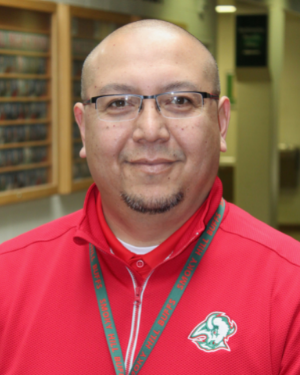At Smoky Hill High School in Aurora, CO, you could say we’re victims of our own success when it comes to student protests. One thing we emphasize in our school is that students need to have a voice. In the grand scheme of things, the school is their school. It’s not my school, it’s not the teachers’ school—it’s the community’s school.
One result of that focus on student voice is that we’ve had a number of student protests and walkouts in the past few years. Our students have marched in favor of social justice issues, like Black Lives Matter and rights for DACA students. And they’ve protested against other issues, like our district mask mandate and, most recently, the war in Ukraine.
One common part of every protest at our school is that students come to the administration and tell us in advance what they are planning so we can discuss logistics and avoid problems. They understand they have a right to protest and a right to walk out, and they also understand the consequences that go with that, such as being counted absent from class or being held responsible for anything that might be damaged. Fortunately, we’ve never had any problems with the students’ actions during a protest.
About four years ago, I helped NASSP draft some guidelines for dealing with student protests or walkouts during school time. As I look at that guidance today in light of the recent student walkouts in Florida, I’m happy that it still stands up really well. I think one reason is because of the first piece: Above all, we must keep our students safe.
We’ve only had one protest where students left school grounds, and that can cause complications. We don’t want students walking in traffic or putting themselves or others at risk. Sometimes it can be useful to recommend alternatives, such as keeping the protest on school grounds or convening a schoolwide discussion.
Another thing we have emphasized at our school is that teachers and staff may not take part in protests. If an entire class walks out, the teacher should follow and help provide supervision, but that’s the extent of their involvement. It’s not our job to debate our personal feelings with the kids or put any kind of political beliefs on them. Our job is to listen. The same goes for the administrators, school resource officers, and security staff who must be present at student protests. We stay in the background and let students have the time that they feel they need.
Our security team has developed really good relationships with our students. When you know who the kids are, and the kids know that you know who they are, things go better. We want to avoid an “us vs. them” situation. And for that same reason, we try to avoid having police on site unless students leave campus. Especially in the last couple years, people can be very sensitive about police being around, so we purposely don’t have them there unless something serious goes down.
Not surprisingly, we do have some parents who question why we let our students engage in protests. My response? As long as it’s not disrupting the school’s educational setting, students have the right to walk out and protest. In fact, I think it’s valuable for students to not just talk about issues in civics classes but actually live them. Education is not just about the transfer of knowledge. It’s also about students applying what they’ve learned in school and how that connects to the real world.
I also feel fortunate that we have not had the same kinds of protests that other districts have had about book banning and parents wanting to control everything that’s taught in school. We’re a public school, and the purpose of a public education is not to teach kids only what parents want them to be taught. As a public school, we serve not just the parents but the entire community, hence the word “public.” Our job is to teach students what society needs them to know in order to be successful. We talk a lot with our students about how they must seek to learn and understand, especially with everything that’s going on in the world right now.

